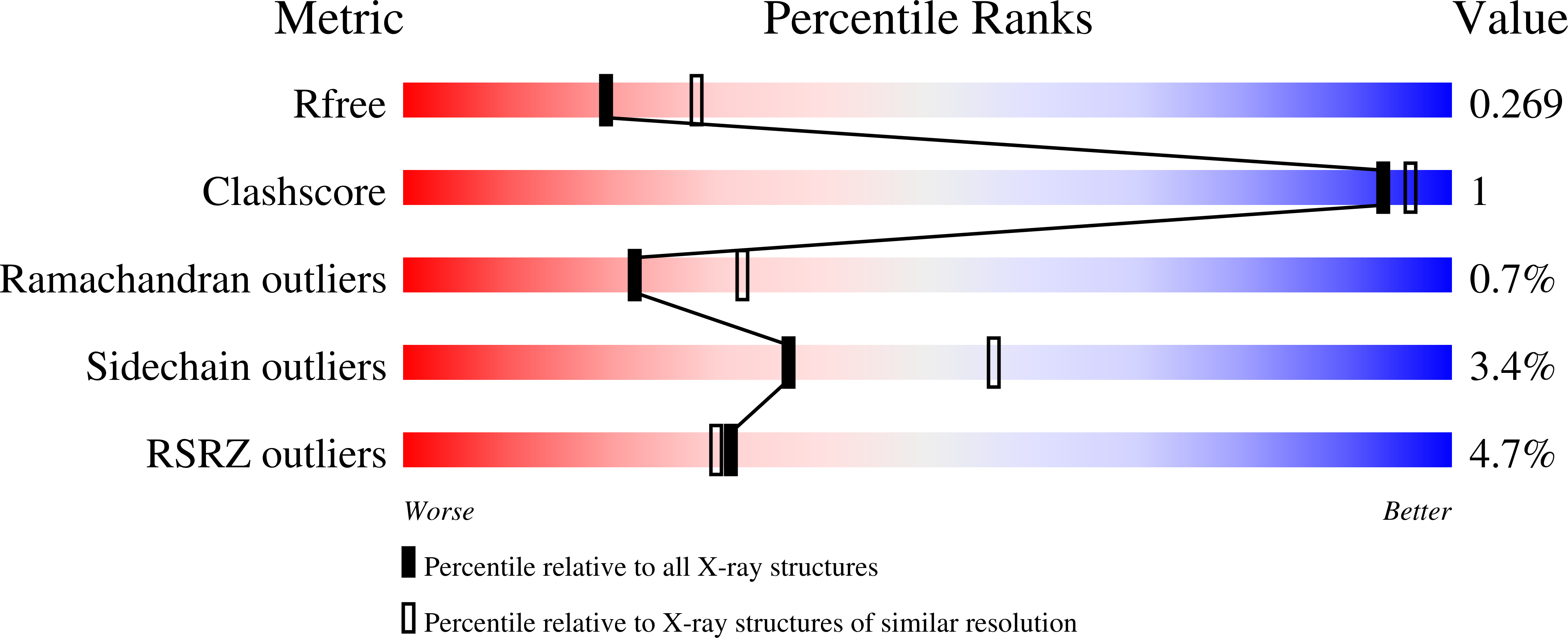Toward Photopharmacological Antimicrobial Chemotherapy Using Photoswitchable Amidohydrolase Inhibitors.
Weston, C.E., Kramer, A., Colin, F., Yildiz, O., Baud, M.G., Meyer-Almes, F.J., Fuchter, M.J.(2017) ACS Infect Dis 3: 152-161
- PubMed: 27756124
- DOI: https://doi.org/10.1021/acsinfecdis.6b00148
- Primary Citation of Related Structures:
5G1C, 5G3W, 5LI3 - PubMed Abstract:
Photopharmacological agents exhibit light-dependent biological activity and may have potential in the development of new antimicrobial agents/modalities. Amidohydrolase enzymes homologous to the well-known human histone deacetylases (HDACs) are present in bacteria, including resistant organisms responsible for a significant number of hospital-acquired infections and deaths. We report photopharmacological inhibitors of these enzymes, using two classes of photoswitches embedded in the inhibitor pharmacophore: azobenzenes and arylazopyrazoles. Although both classes of inhibitor show excellent inhibitory activity (nM IC 50 values) of the target enzymes and promising differential activity of the switchable E- and Z-isomeric forms, the arylazopyrazoles exhibit better intrinsic photoswitch performance (more complete switching, longer thermal lifetime of the Z-isomer). We also report protein-ligand crystal structures of the E-isomers of both an azobenzene and an arylazopyrazole inhibitor, bound to bacterial histone deacetylase-like amidohydrolases (HDAHs). These structures not only uncover interactions important for inhibitor binding but also reveal conformational differences between the two photoswitch inhibitor classes. As such, our data may pave the way for the design of improved photopharmacological agents targeting the HDAC superfamily.
Organizational Affiliation:
Department of Chemistry, Imperial College London , London SW7 2AZ, United Kingdom.





















